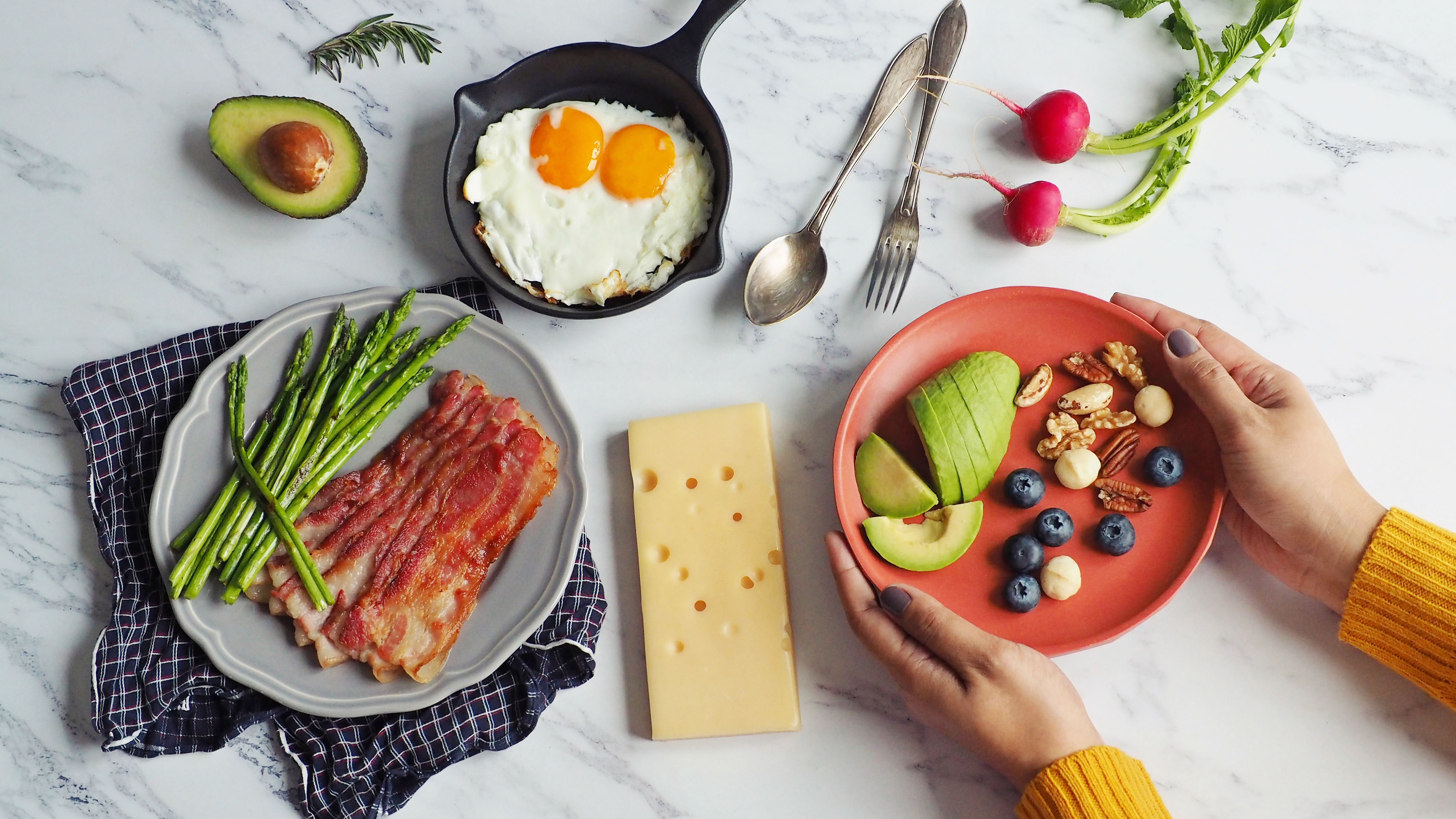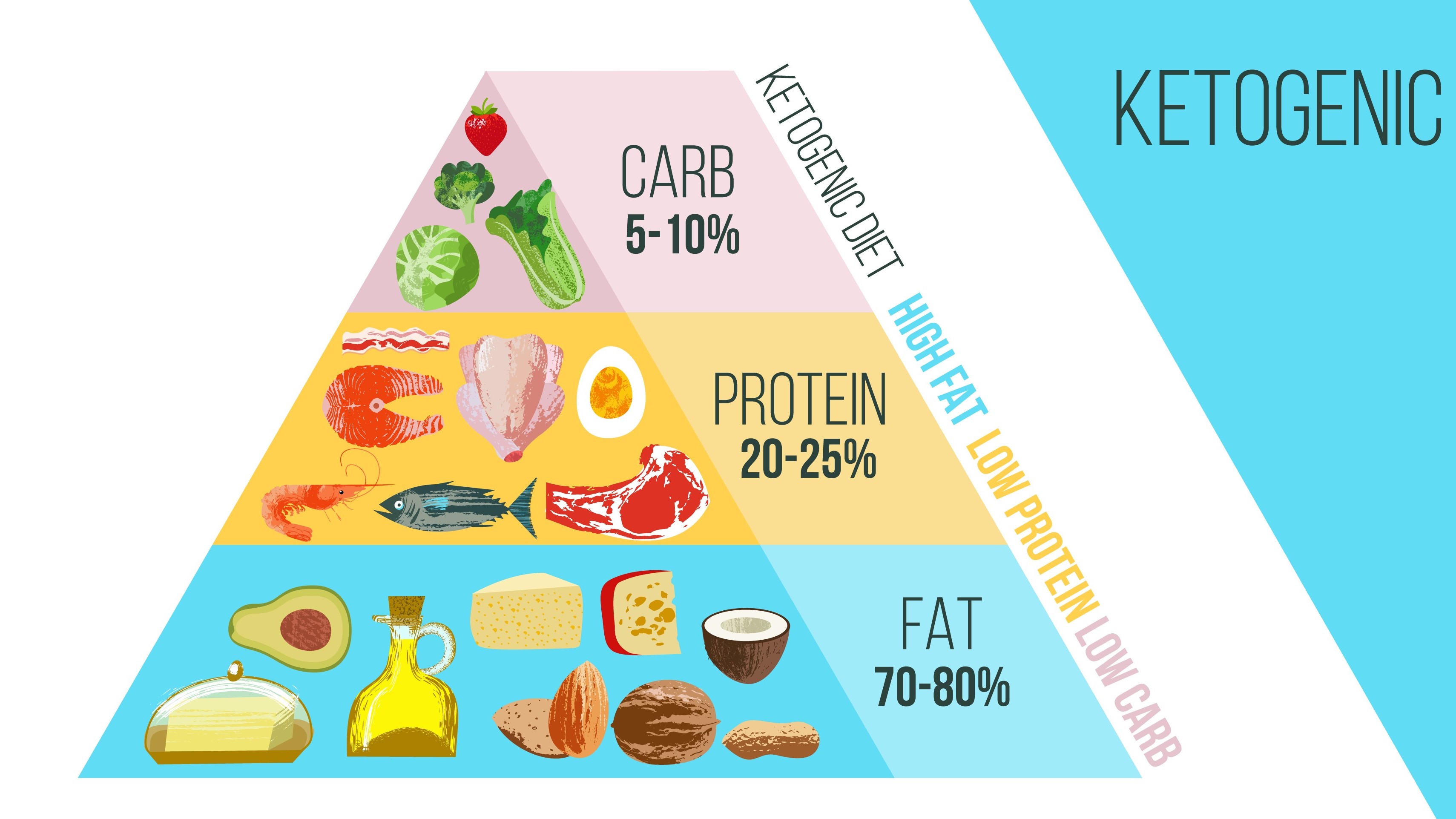I tried following a Keto diet for a month — here’s what happened

For as long as I can remember, I’ve never needed to restrict my food intake, or alter my eating habits. However, like many others, I couldn’t escape gaining a few extra pounds over the past two years, after reaching for carb-based snacks to help carry me throughout various lockdowns.
A month ago, I was advised by a doctor to follow a completely new diet for health reasons. At the time, I barely knew anything about the Keto diet, apart from occasionally bumping into low-carb recipes on YouTube and TikTok. The idea of completely cutting out carbs scared me, but the more I did my research, the more compelling it became.
Disclaimer: If you’re reading this and are considering following a Keto diet, we’d advise a careful approach and a consultation with either your general practitioner or a nutritionist. This article is based strictly on personal experience.
What is Keto and what are the basics?
A ketogenic diet involves eating food that is high in fat and low in carbs, while consuming an adequate amount of protein. Foods that fall under this category include meat, poultry, eggs, fish, cheeses, nuts, seeds, various butters and oils, as well as low-carb, high-fiber vegetables including, but not limited to: broccoli, asparagus, cabbage, avocados, and lettuce. The Keto diet is generally known to be one of the most effective diets for weight loss.
But how exactly does Keto help burn fat any better than any other diet? Under normal circumstances, your body uses carbohydrates as fuel. In Keto, the absence of carbs encourages your liver to begin producing chemicals called ketones to help your body break down fats to use as energy. This process typically occurs naturally while fasting or during long periods of exercise.
The most important part of going about Keto the right way is to know your macros. Macronutrients are dietary elements that make up your daily nutrition: fat, protein and carbohydrates. Strict keto allows eating no more than 20-50 grams of net carbs per day, depending on the person in question. You’ll also have to make sure that you’re eating enough fats to get into ketosis. In order to find out the specific number for your daily macros and calorie goals, you’ll have to use a TDEE calculator or have a nutritional expert help you.

This step is entirely optional, but I also combined Keto with intermittent fasting (IF). If you’re unfamiliar, IF is a common practice that’s often paired with low-carb diets such as Keto that involves cycling between periods of fasting and eating throughout the day. By eating your last meal of the day in the evening, skipping the traditional breakfast in the morning and eating your first meal of the day in the afternoon instead, you essentially limit your eating window to only a few hours a day.
Get instant access to breaking news, the hottest reviews, great deals and helpful tips.
IF sounds incredibly tough at first, but it’s a great way to make dieting easier considering how well-adjusted human bodies are to going without food for extended periods. In my case, I opted for a 20-hour fasting period, meaning I ate my first meal of the day at around 5 o’clock in the evening and had dinner by 9 PM with a few small snacks in between. Naturally, as is the case with most things, it’s recommended to give your body a bit of time to adapt to IF. You can start off by skipping breakfast and gradually shifting your first meal of the day by an hour until you reach a fasting window that you’re comfortable with.
Now that I’ve covered the general gist of both Keto and IF, let me dive deep into how it went. It’s important to note that every individual’s body and lifestyle is different, so my personal experience won’t predict how Keto and IF could go for you. Regardless, some of the points below are useful for anyone who’s considering going full on Keto, so do make sure to keep that in mind.
Following a Keto diet: the cons
Keto flu
If there’s one con of the Keto diet that I absolutely despise, it’s the so-called “keto flu”. The term is generally used for when you’re feeling unwell for the first week(s) on Keto. The symptoms differ depending on the person, but for me, it involved extreme fatigue, headaches and dizziness. Some symptoms are similar to what you feel when you first catch a cold or a flu, hence the name of the term. It sounds horrible, but it usually goes away within the first week or so. In my case, it lasted a little longer, since I combined my diet with a sudden change to intermittent fasting.
Hard on mental health
Keto will probably be easier for people who have followed strict diets before, but for a novice like myself, it was really tough. l am the kind of person who finds joy in food, and to put it lightly, there are very few Keto-friendly dishes that really hit the spot. Plus, counting calories and keeping track of every consumed drop of food or drink is tiring. Not to mention the anxiety you may feel whenever you exceed your calorie goal, or when you’re triple-checking that the barista at Starbucks added sugar-free caramel syrup to your coffee order, and not the regular high-glucose one.
Be sure to step into this diet with a calm mindset and accept that mistakes are normal, especially if you’re going Keto for the first time. During Keto, hormone levels of cortisol (also called the stress hormone) may rise if you don't eat enough or give yourself enough time to relax. For me, even something as simple as walking my dog while sipping on peppermint tea helped a lot.
Almost no eating out
The sad truth is that unfortunately, there aren’t many keto-friendly restaurants around. Of course, this depends on where you’re based, but I had a lot of trouble finding suitable restaurants in London. As much as I wanted to find anything other than steakhouses and salad bars, I couldn’t find anywhere that offered the eating out experience I was used to. I’m guessing that right now, due to a lack of demand, the hospitality industry isn’t exactly optimized for keto eaters.
Following a keto diet: the pros
High energy levels and fewer cravings
After the Keto flu settled, I eventually started noticing a spike in my energy levels, especially when I was still fasting — though I’m not sure whether that I can attribute this entirely to keto, intermittent fasting, or both. Regardless, about two weeks in I started to feel energized and at times even hyper before I’d had my morning coffee. I’ve never been a morning person, but it felt good to feel so productive. Another benefit was that I almost entirely stopped craving carbs and sugary foods about three weeks in. At one point, I started being able to sit with my friends as they ate my favorite thin-crust Neapolitan pizza without the temptation to take a single bite.
Weight loss is a bonus
I have to admit, Keto lives up to its reputation. It’s a great way to shave off a few extra pounds in a short amount of time. In four weeks, I managed to lose 13 pounds in total, with the majority dropping within the first two weeks. About three weeks in, the weight loss started to slow, but this is entirely normal — losing weight on Keto isn’t always consistent and doesn’t follow a linear regression. As long as you’re eating less calories than you are burning, you should still be losing weight. I found that my water retention varied throughout the month, which affected my weight on the scales, since our bodies can retain more water than usual depending on factors such as hormone levels, stress, lack of sleep and more.
Creative recipes
There’s a popular misconception that dieting on Keto is extremely boring — I entirely disagree. Just like with any other diet or aspect of your life, it is what you make of it. I had my reservations at first too — I couldn’t bear the thought of not having fruit or root vegetables for an entire month, let alone giving up carbs like pasta and bread. Turns out, you don’t have to deprive yourself of your favorite dishes. If you simply add the word “keto” to your Google search next to the name of your favorite dish, you’ll find a low-carb version of it that you can experiment with, so long as you don’t break the dietary restrictions and hit your macro goals. I, for one, indulged myself in eggplant lasagna, cauliflower cheese bakes, cheesecakes, burgers and even chocolate mousses. Hell, I even put together a few of the recipes myself. There’s tons of recipes out there, and personally, figuring them out has made cooking as fun as ever. Plus, you can save so much money by eating in.
Following a keto diet: the bottom line
My Keto experience was positive, but far from ideal. Trying to go an entire month carb-free was frustrating, and although the cravings settled down in a few weeks’ time, the temptation was particularly overwhelming in December, with Christmas markets popping up nearly everywhere in London. Still, I felt like my self-control improved the longer I was on Keto. After all, why would I “cheat” after all this time?
The best thing about my experience wasn’t just the diet alone, it was the combination of Keto and IF that truly made it work. Personally, I don’t think I could stick to Keto in the long-term. Despite it being great as a short-term weight-loss aid and detox from carbohydrates, I imagine the effect that it had on my mental health would be more difficult to manage over a longer period of time. Intermittent fasting, on the other hand, definitely worked for my body and I will continue to stick to it in the new year.
I must clarify again that this is only based on my personal experience, so if you’re trying to decide whether Keto is for you, it's worth consulting with your general practitioner first.

Denise is a Life Reporter at Newsweek, covering everything lifestyle-related, including health, relationships, personal finance, beauty and more. She was formerly a news writer at Tom’s Guide, regularly producing stories on all things tech, gaming software/hardware, fitness, streaming, and more. Her published content ranges from short-form news articles to long-form pieces, including reviews, buying guides, how-tos, and features. When she's not playing horror games, she can be found exploring East London with her adorable puppy. She’s also a part-time piano enthusiast and regularly experiments in the kitchen.
